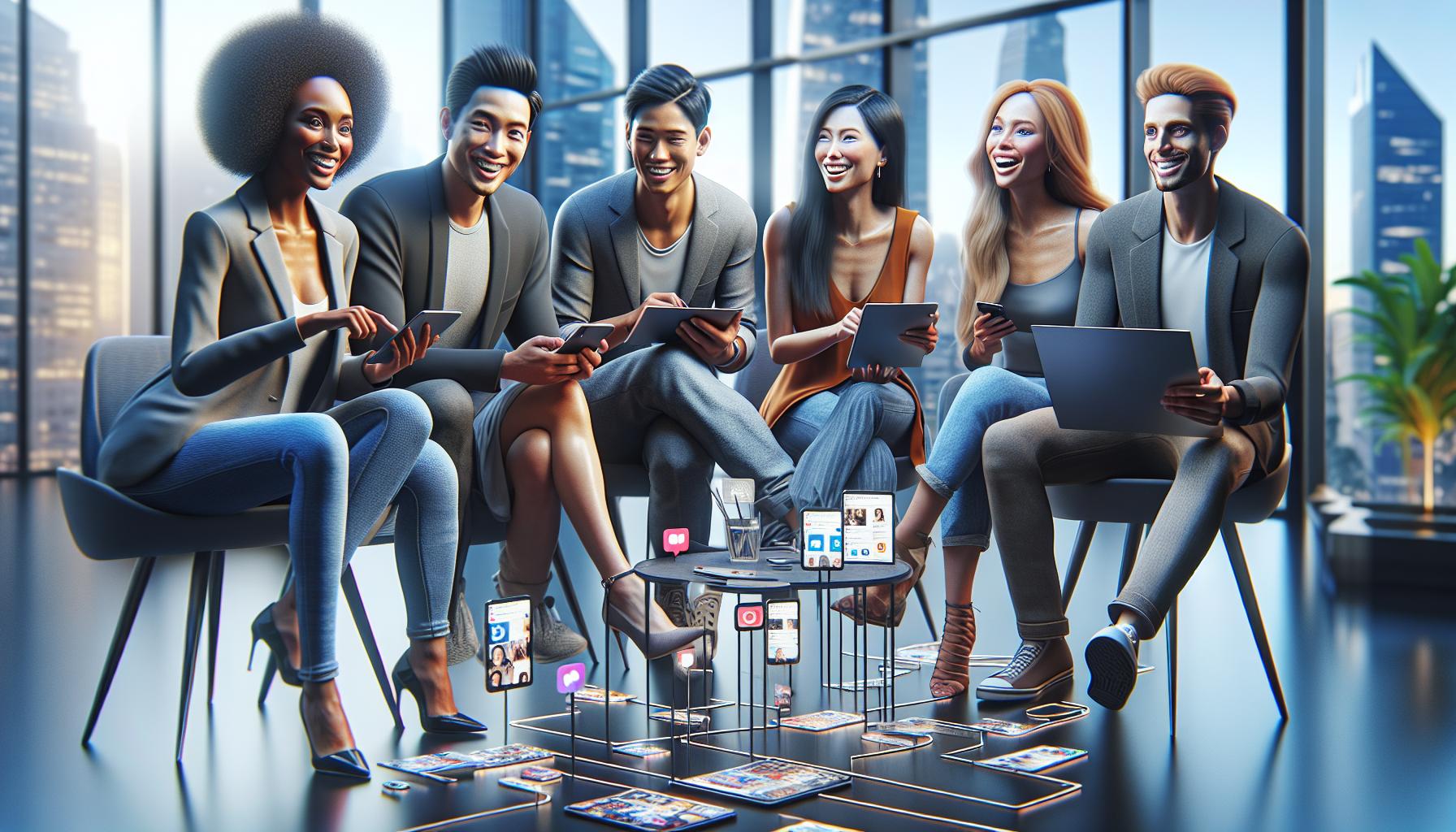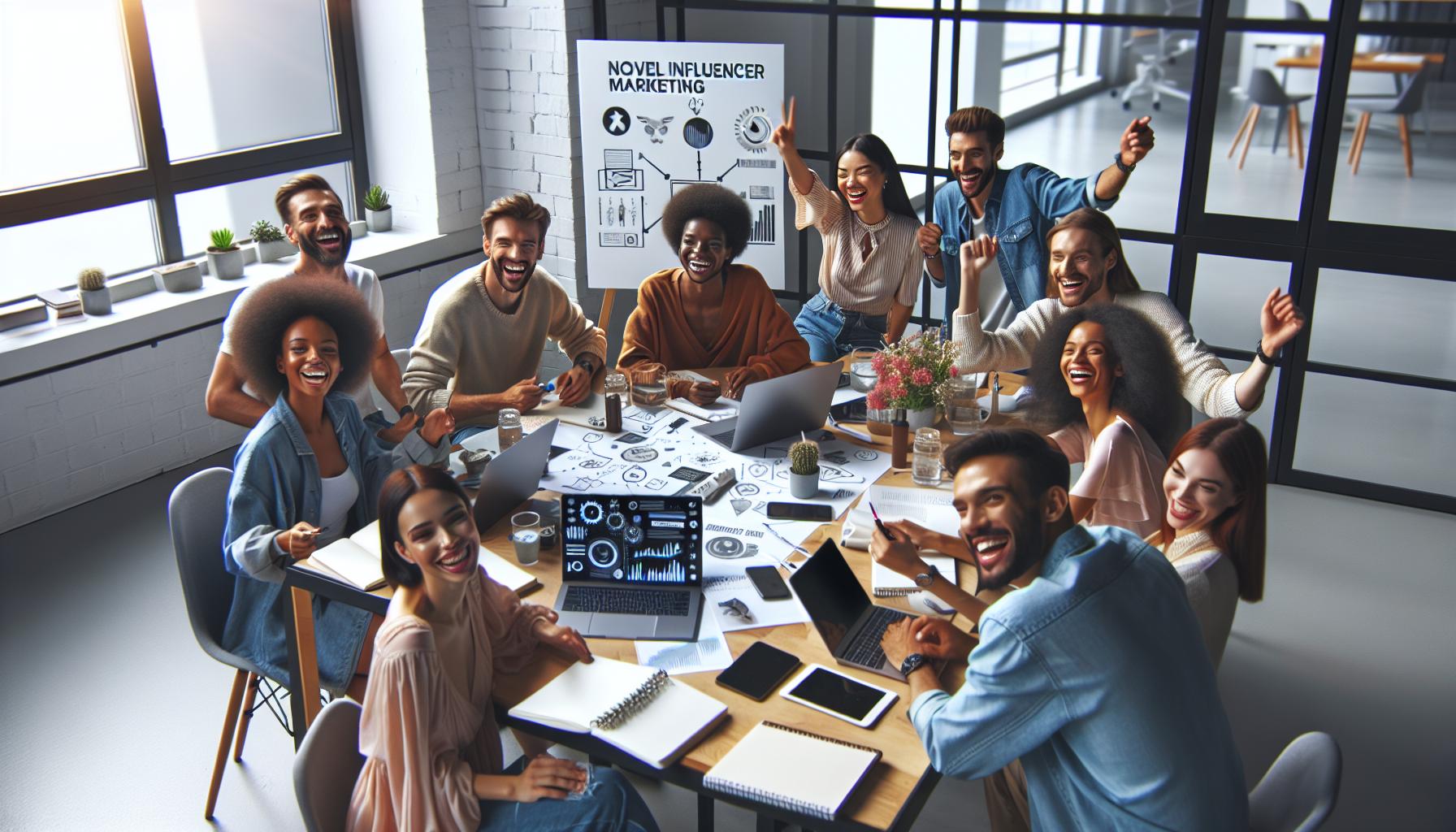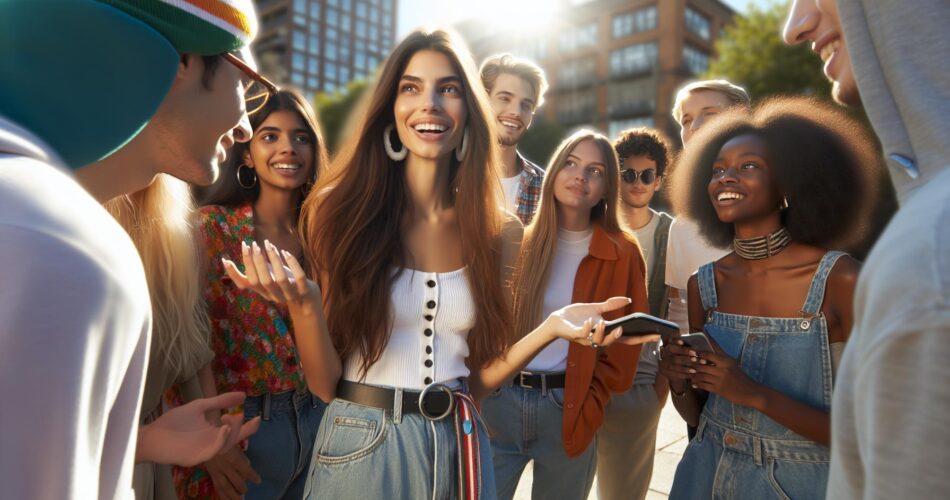In today's digital landscape influencer marketing has transformed from a trendy buzzword into a billion-dollar industry. From Instagram fashionistas to TikTok dance sensations these social media maestros have created a new social hierarchy where followers are the new currency and engagement rates are the measure of success.
This dynamic shift has birthed what experts now call the influencer marketing society – a fascinating ecosystem where brands consumers and content creators dance in a carefully choreographed waltz of hashtags sponsored posts and affiliate links. It's a world where a single post can make or break a product launch and where authenticity paradoxically coexists with carefully curated content.
Influencer Marketing Society
Social media platforms transformed traditional marketing dynamics by creating a $16.4 billion influencer industry in 2022. Instagram leads the influencer marketing landscape with 1.2 billion active users engaging with creator content daily. Facebook follows with 2.9 billion monthly active users participating in influencer-driven conversations.
Digital content creators shape consumer behavior through authentic storytelling techniques:
- Creating relatable lifestyle content that resonates with specific audience segments
- Sharing personal experiences with products through unboxing videos tutorials
- Developing niche communities around specialized interests fashion beauty tech gaming
The influence economy operates through multiple channels:
- Instagram Stories generating 500 million daily views
- TikTok achieving 89% engagement rates for micro-influencer content
- YouTube hosting 51% of brand collaboration videos
- Pinterest directing 87% of users to make purchase decisions
| Platform | Engagement Rate | Avg. Cost Per Post |
|---|---|---|
| 4.7% | $1,170 | |
| TikTok | 8.9% | $750 |
| YouTube | 3.2% | $2,085 |
| 2.8% | $480 |
Brand partnerships evolved from traditional celebrity endorsements to micro-influencer collaborations reaching targeted demographics. Content creators with 10,000 to 50,000 followers generate 60% higher engagement rates compared to macro-influencers. Marketing teams allocate 63% of their social media budgets to influencer campaigns targeting Gen Z consumers.
- Automated campaign management tools
- Analytics dashboards measuring ROI metrics
- Content scheduling optimization systems
- Engagement tracking algorithms
Understanding the Influencer Ecosystem

The influencer marketing ecosystem operates as an interconnected network of content creators, platforms, brands, and audiences. This dynamic environment creates value through strategic collaborations and authentic engagement.
Types of Social Media Influencers
Social media influencers segment into distinct categories based on follower count and engagement metrics:
- Mega-influencers (1M+ followers) dominate platforms with celebrity-level status, creating broad-reach campaigns for global brands
- Macro-influencers (100K-1M followers) specialize in specific niches like fashion, tech or fitness
- Mid-tier influencers (50K-100K followers) maintain strong connections with targeted audience segments
- Micro-influencers (10K-50K followers) generate high engagement rates through focused community building
- Nano-influencers (1K-10K followers) excel in hyper-local marketing with authentic personal connections
- Instagram leads creator monetization with integrated shopping features branded content tools
- TikTok dominates short-form video engagement reaching 4.1B global downloads
- YouTube supports long-form content creators through Partner Program revenue sharing
- Influencer marketing agencies like MediaKix Viral Nation coordinate brand partnerships
- Platform-specific creator marketplaces connect brands with relevant influencers
- Analytics tools such as HypeAuditor CreatorIQ measure campaign performance metrics
| Platform | Key Feature | Monthly Active Users |
|---|---|---|
| Shopping Integration | 2B+ | |
| TikTok | Short-form Video | 1B+ |
| YouTube | Long-form Content | 2.6B+ |
The Psychology Behind Influencer Marketing

Social media influencers leverage psychological principles to create meaningful connections with their audiences. These psychological factors drive consumer behavior through established trust mechanisms social proof dynamics.
Trust and Authenticity
Influencers build credibility through consistent authentic content that resonates with their target audience. Studies show 83% of consumers trust recommendations from content creators over traditional advertising. Content creators establish authenticity by sharing personal experiences stories candid moments from their daily lives. This transparency creates a genuine connection with followers who identify with the influencer's lifestyle values beliefs. Successful influencers maintain authenticity by selecting brand partnerships that align with their established persona incorporating sponsored content naturally into their regular posting schedule.
Parasocial Relationships
Digital content creators foster one-sided emotional bonds where followers feel personally connected to influencers they follow online. These parasocial relationships develop through regular exposure to an influencer's daily life intimate moments personal stories. Research indicates 72% of followers take purchasing recommendations from influencers they feel emotionally connected to. Audiences view influencers as trusted friends rather than marketing channels due to the intimate nature of social media content. This psychological connection manifests in higher engagement rates increased brand trust when influencers promote products or services.
| Psychological Factor | Impact on Consumer Behavior |
|---|---|
| Trust in Influencers | 83% trust recommendations |
| Parasocial Bonds | 72% follow purchase advice |
| Authentic Content | 4.5x higher engagement rates |
The Economic Impact of Influencer Culture

The influencer marketing economy transforms traditional business models through digital content monetization strategies. Social media creators generate substantial revenue streams while reshaping consumer spending patterns across multiple industries.
Brand Partnerships and Monetization
Content creators leverage diverse revenue channels to maximize their earning potential. Instagram sponsorships generate $5,000 to $20,000 per post for macro-influencers with 500,000+ followers. Affiliate marketing programs provide 5-20% commission rates on product sales through tracked links. Brand ambassadorships offer monthly retainers ranging from $3,000 to $15,000 for consistent promotion. Digital products like courses tutorials merchandise create passive income streams. Premium content subscriptions on platforms like Patreon contribute $1,000 to $10,000 monthly for established creators.
Market Size and Growth Trends
The global influencer marketing industry reached $16.4 billion in 2022, marking a 30% increase from 2021. Instagram dominates with 48% of brands investing in platform-specific campaigns. TikTok demonstrates rapid expansion with 325% year-over-year growth in influencer marketing spend. Micro-influencers capture 91% of brand partnerships across social platforms. Beauty fashion verticals lead industry spending at $2.3 billion annually in influencer campaigns. Gaming tech sectors show 40% compound annual growth rates in creator collaborations. Major brands allocate 15-25% of marketing budgets to influencer partnerships.
Ethical Considerations and Regulations
The influencer marketing industry operates under strict ethical guidelines and regulatory frameworks to protect consumers and maintain transparency in digital advertising. These standards ensure accountability while fostering trust between creators, brands, and audiences.
Disclosure Requirements
The Federal Trade Commission (FTC) mandates clear disclosure of sponsored content through specific hashtags like #ad or #sponsored. Influencers must place these disclosures prominently at the start of captions or within the first frame of video content. Instagram requires content creators to use their built-in “Paid Partnership” label for sponsored posts. The European Union enforces similar regulations through the General Data Protection Regulation (GDPR), requiring influencers to disclose when they use filters or edit sponsored content. Violations of these disclosure requirements result in fines up to $43,792 per incident under FTC guidelines.
Social Responsibility
Content creators hold significant responsibility in shaping societal values through their digital presence. Leading platforms implement community guidelines to prevent the spread of misinformation, with Instagram removing 1.2 million harmful posts in 2022. Influencers practice inclusive marketing by featuring diverse representation in sponsored content, reaching audiences across different demographics. Mental health awareness campaigns by creators increased 47% in 2022, highlighting the importance of responsible content creation. Environmental consciousness drives 68% of influencers to partner with sustainable brands, promoting eco-friendly products to their followers.
Cultural Shifts and Consumer Behavior
Digital influencers reshape modern consumer behavior through personalized content creation reaching 4.9 billion social media users globally. Social platforms transform traditional purchasing patterns as 89% of consumers make buying decisions based on influencer recommendations.
Gen Z audiences demonstrate shifted loyalty from traditional celebrities to content creators who share authentic experiences. Instagram shopping features enable direct purchases through influencer posts generating $2.7 billion in creator-driven sales during 2022.
Three key behavioral changes emerge in the influencer-driven marketplace:
- Discovery-based purchasing replaces traditional search with 76% of consumers finding products through social feeds
- Community-driven decisions reflect peer validation where micro-influencer recommendations convert 7x higher than celebrity endorsements
- Mobile-first shopping behaviors align with short-form video content leading to 300% higher engagement rates
| Consumer Behavior Metric | Traditional Marketing | Influencer Marketing |
|---|---|---|
| Purchase Intent | 27% | 58% |
| Brand Trust | 42% | 71% |
| Engagement Rate | 1.6% | 5.7% |
Social proof dynamics evolve as consumers trust user-generated content 92% more than traditional advertising. Micro-communities form around specific niches enabling targeted marketing through relatable content creators. Platform algorithms adapt to serve personalized content matching individual interests increasing average watch time by 45%.
Digital natives express preference for authentic storytelling with 84% following creators who share genuine experiences. Social commerce features integrate seamlessly into content consumption creating frictionless purchasing experiences. Influencer recommendations drive 71% of purchasing decisions among millennials ages 18-34.
The Future of Influencer Marketing
By 2025, the influencer marketing industry expects to reach $24.1 billion, driven by technological innovations and evolving consumer preferences. Artificial Intelligence algorithms optimize influencer selection by analyzing engagement patterns, audience demographics and content performance metrics.
Virtual influencers represent an emerging trend, with CGI-created personalities like Lil Miquela amassing 2.7 million Instagram followers. Augmented Reality features enable immersive shopping experiences through influencer content, creating seamless paths from discovery to purchase.
Social commerce integration transforms how audiences interact with influencer content:
- Live shopping streams generate $480 billion in sales annually
- Instagram Shops connect creator content directly to product catalogs
- TikTok Shop features drive 67% higher conversion rates than traditional posts
The rise of nano-influencers signals a shift toward hyper-targeted marketing:
- 5,000 or fewer followers generate 8.8% engagement rates
- 82% of consumers trust recommendations from smaller creators
- Brands allocate 45% of influencer budgets to nano-partnerships
Emerging platforms reshape content creation standards:
- Decentralized social networks emphasize creator ownership
- Web3 technologies enable tokenized fan communities
- Metaverse spaces create new sponsorship opportunities
Data-driven campaign optimization becomes standard practice:
- AI-powered sentiment analysis tracks brand perception
- Predictive analytics forecast content performance
- Attribution modeling measures multi-channel impact
These developments indicate a transformation from traditional influencer marketing toward integrated creator ecosystems powered by technology and authentic connections.
The Rise of Influencer Marketing in Modern Society
The influencer marketing society has fundamentally transformed how brands connect with consumers in the digital age. With projected growth reaching $24.1 billion by 2025 this dynamic ecosystem continues to evolve through technological innovations and shifting consumer behaviors.
Social media creators have established themselves as powerful voices that shape purchasing decisions while building authentic connections with their audiences. The rise of micro and nano-influencers alongside advanced analytics tools has created more targeted and effective marketing strategies.
As platforms integrate new features and technologies emerge the future of influencer marketing looks promising. Brands that embrace this evolution and prioritize authentic partnerships will find themselves well-positioned to thrive in this creator-driven landscape.

